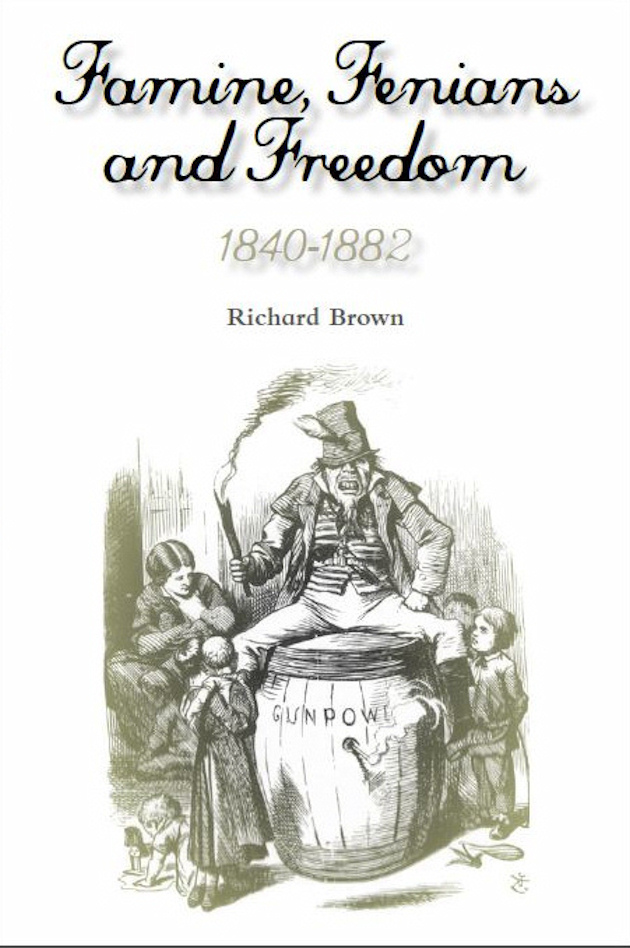Famine, Fenians and Freedom 1840-1882
Review

Famine, Fenians and Freedom 1840-1882, Richard Brown, Clio Publishing, Southampton, 2011, paperback, 581 pp., £27.95, ISBN 978095569878
Richard Brown's engagingly cryptic, alliterative title to this second volume of his rebellions and resistance trilogy inadequately conveys the extent and depth of his wide-ranging contextual analysis of this formative period of Irish history in the four decades before the Phoenix Park murders of 1882. Indeed, his in-depth study encompasses both the transatlantic origins of Fenianism in the USA and the impact of its export via a world-wide Irish diaspora resulting from the Great Famine of 1845-49, into neighbouring Canada and beyond to the continents of Africa and Australasia. He explains the attempts in the 1840s by Young Ireland and in the 1850s and 1860s by the Fenians to achieve Irish independence from British rule through rebellion and the efforts of ‘the populist and parliamentarian constitutionalist Repeal Association and campaign for Home Rule to achieve devolved government' in the period up to 1882. He then explores the nature of sporadic resistance and rebellion during the Chartist era in Britain and also in Canada and Australia. He assesses astutely the roles of key figures including Daniel O'Connell, ‘the central figure in Irish politics' during his own lifetime, and other significant figures such as Isaac Butt, James Stephens, Michael Davitt and Charles Stewart Parnell. He understates, perhaps, the impact of his concluding episode, the murder of Cavendish ‘an amiable and unassuming Liberal politician', which Brown recognises was a ‘public relations disaster for the Irish Republican Brotherhood', on the British mainland when the assassination provoked serious anti-Irish riots at Brighouse within Cavendish's Yorkshire constituency and inspired his memorialisation in both the Yorkshire and Derbyshire Dales. The book's user friendly, clearly differentiated index enhances the book's appeal, counterbalancing some rather indistinct map reproductions in the opening pages.

